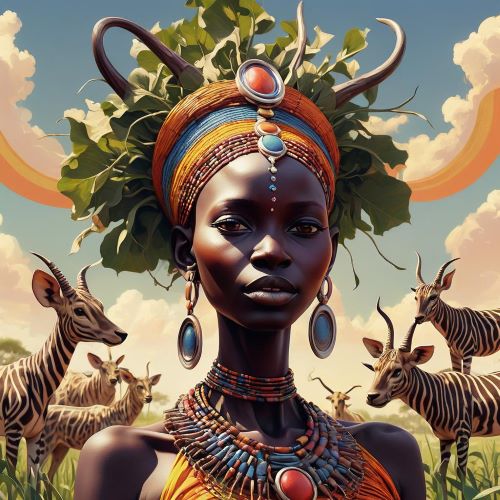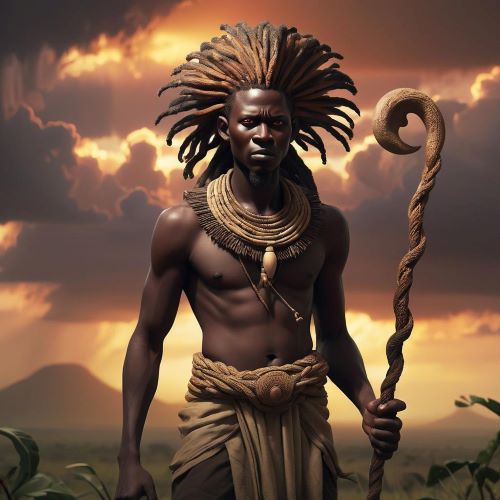Dinka & Nuer Mythology
Dinka and Nuer mythology, emerging from the pastoral heartlands of South Sudan, embodies the spiritual rhythm of the Nile — a world where cattle, rain, and divinity are bound together in sacred unity. The Dinka (Jieng) and Nuer (Naath) peoples share ancient Nilotic roots and a cosmology centered on balance between humans, nature, and the divine. Their myths, preserved through oral tradition and ritual song, are not only stories of creation but living philosophies that govern ethics, ecology, and community life. Through their gods, ancestors, and sacred animals, the Dinka and Nuer express a deep respect for life’s cycles and the fragile harmony between heaven and earth.
At the heart of Dinka mythology stands Nhialic, the supreme creator and sky god. Nhialic is the source of rain, fertility, and destiny — an invisible, eternal being who watches over all life. In the beginning, Nhialic created the first man and woman, Garang and Abuk, and placed them on earth with a single stalk of millet for sustenance. When Abuk disobeyed by planting too much grain, her hoe struck the sky, angering Nhialic. In response, he withdrew heaven from the earth, creating the separation between the divine and mortal realms. This myth reflects a moral truth central to Dinka belief: that greed and disobedience disrupt the sacred balance of the world, while humility preserves harmony.
The Dinka see cattle as sacred gifts from Nhialic — living vessels of divine blessing and the bridge between the spiritual and material worlds. Every part of Dinka life, from ritual to song, revolves around the cow: it is sacrifice, wealth, and prayer made flesh. Sacrifices of cattle are offered to honor ancestors or seek forgiveness, as the smoke from the ritual fire is believed to carry human words to the heavens. The spirits of the ancestors (jak) serve as intermediaries between Nhialic and the living, ensuring prosperity, fertility, and protection.
Among the Nuer, mythology echoes many of these same themes. They too revere Kwoth, the supreme spirit, whose name means “breath” or “spirit” — a reflection of divine omnipresence. Kwoth is both transcendent and immanent, manifesting in the wind, rain, and thunder. He is often invoked during storms, his voice heard in the rumble of clouds. Like the Dinka, the Nuer believe that all life originates from Kwoth and returns to him. Their myths also tell of the first humans and their covenant with the divine, emphasizing moral order, compassion, and communal unity.
Both traditions are rich with rain and fertility myths, in which divine beings send water as both blessing and test. The cycle of drought and flood is seen as sacred communication between heaven and earth — a reminder of dependence, gratitude, and resilience. Dinka and Nuer rituals, songs, and storytelling preserve these beliefs through generations, blending reverence with reflection.
Dinka and Nuer mythology remains one of the most poetic spiritual systems of Africa — a living theology of rain and river, spirit and soil. It teaches that heaven once touched the earth, and though it has withdrawn, its echo still sings in the thunder and the lowing of sacred cattle.



